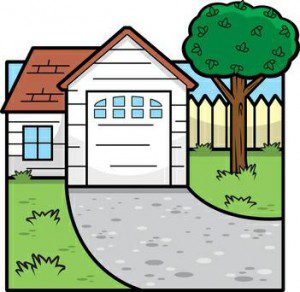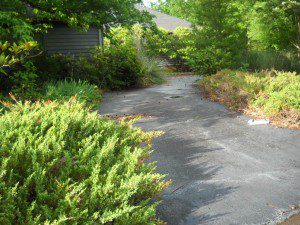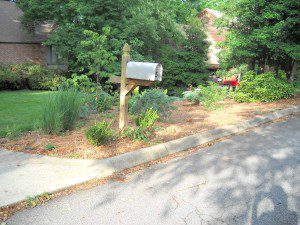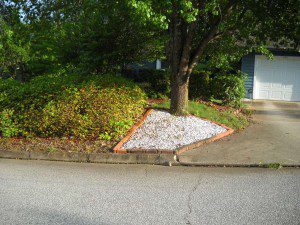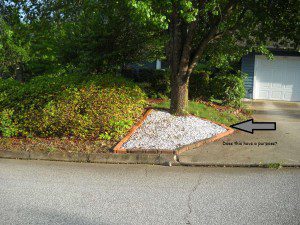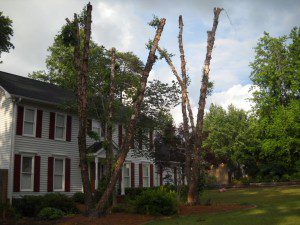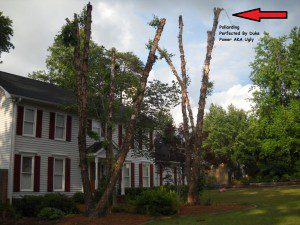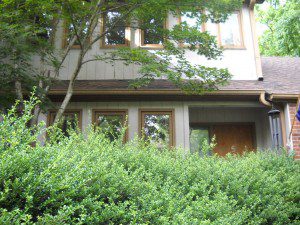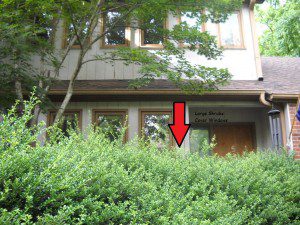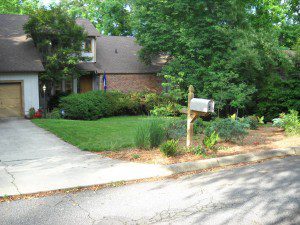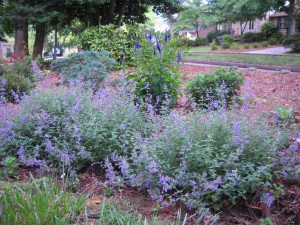Curb Appeal, do you have it?
Part One Of A Two Part Series
“A man’s house is his castle; and while he is quiet, he is as well guarded as a prince in his castle.”
Deep words from 250 (or so) years ago, but they still resonate like a Timpani in a high school band.
For very good reason too, a home should be so much more than a roof over your head and a place to keep your stuff. Your home should be warm and inviting, exuding the feeling of warmth and safety, almost like driving directly into your Grandmothers arms. Your home should also provide you with pride, almost a badge of honor for your hard work and effort. This doesn’t mean that you need a castle though, and it certainly doesn’t mean the bigger the better, its the labor of love put into it that shows, not so much the size.
From the street (aka curb) your home will speak to the rest of the world while you’re not there to speak for yourself, and what you must do is determine a few things before jumping all over the “I have to increase my curb appeal or the neighborhood will look bad” bandwagon.
In this series we’re going to break down Curb Appeal into easy to digest segments and decide whether you need more or less (and as you will hopefully realize none at all). The second part of the series will actually show you a project to boost a home on the markets curb appeal to help it sell.
Food for thought about curb appeal:
1. Who do you REALLY look to impress with improving your curb appeal?
Sit down and really think, how many people stop and analyze your house on a day to day basis. If you’re not being tailed by private investigators or if the mobs not out to get you, the number is probably around two; yourself (and family) and the mailman (except on Sundays). Passerbyers typically glace, make an assessment and move on to the next house if they give you even that much thought.
There are some exceptions to that, of course. If your shutters are falling off or there are some other blaring ugliness in the yard, then yes, you deserve all of the critique they can dish you.
2. What is your curbs natural habitat?
In subdivisional circumstances, yes, curb appeal is pretty important, especially in certain communities that have rules and local enforcement (the neighborhood committees) that might frown upon the 7′ tall statue of David in your front yard. If you really want your statue, your priorities might have to change a little bit, like move somewhere where your yard isn’t that important. Large statues like that belong in the Louvre or estates NOT on your cul-de-sac.
The same goes for those who don’t want to spend tons of time and effort manicuring a weed free lawn. You’ll stick out like a sore thumb if you’ve selected a neighborhood with pristine greens and you know that you haven’t got the skills OR the time to “Keep Up With The Jones”. Remember you can always hire somebody, there are always eager people out there to take your money, but make sure the people you hire are on the same page as you. Don’t let them talk you into anything you’re not comfortable with.
3. Why do you think your curb need to be more appealing in the first place?
Is it really THAT bad? Search deep within yourself and put away your inner critic, stop comparing your yard to the yard next door. Once you start that competitive yard mentality chances are you’ll NEVER be happy with what you have. There are circumstances that perhaps your house is a little bit older and has some overgrown shrubs, or maybe the edging has come up in a few places and has to be repaired. Those all all VERY reasonable situations for boosting your curb appeal a little bit.
Are you trying to sell your house and need to make it look a little more unpersonalized? That too is a fantastic reason to look at boosting your curb appeal a little bit. Houses on the market have so many things to take into consideration, and the yard is no exception. A mixture of practicality and color and simplicity from the curb are all welcoming to potential home buyers–tall overgrown shrubbery and weedy flower beds are NOT.
4. How much time and effort are you willing to spend?
Curb appeal is necessary in some circumstances, such as selling a house or when you’re throwing a dinner party for the Pope, but for day to day living curb appeal isn’t really REALLY necessary. As long as you’re happy with how your house looks to you, you shouldn’t fret about it. If you’ve planted a shrub/tree/flower in a location that perhaps wasn’t size wise the best for it, but like the shrub/tree/flower, then leave it! Your happiness is much more important than what the rest of the world thinks, except….
There are certain circumstances when oversize plant materials too close to your home is a danger and liability for your safety and the overall safety of the home. Having messy trees such as sweetgum along a well traveled sidewalk or walkway could endanger somebodys safety by creating a slip hazard. Also, having trees too close to your home can create problems in the scenario of ice storms, winds or lightning. That tree that you planted 15 years ago and have babied along, the tree that you lovingly watered everyday and nurtured into maturity can become your worst enemy when lightning hits it and it ends up in your bed with you.
More important than anything else, this is YOUR home, it should speak to you and make YOU happy, in every aspect. Little things can enhance the looks of your house from the street, but are you really the big wreath on the front door with a bow kind of guy?
Part two of this series will focus on HOW to utilize what you have and make a few simple changes to enhance your curb appeal using easy techniques and very little time and money.


